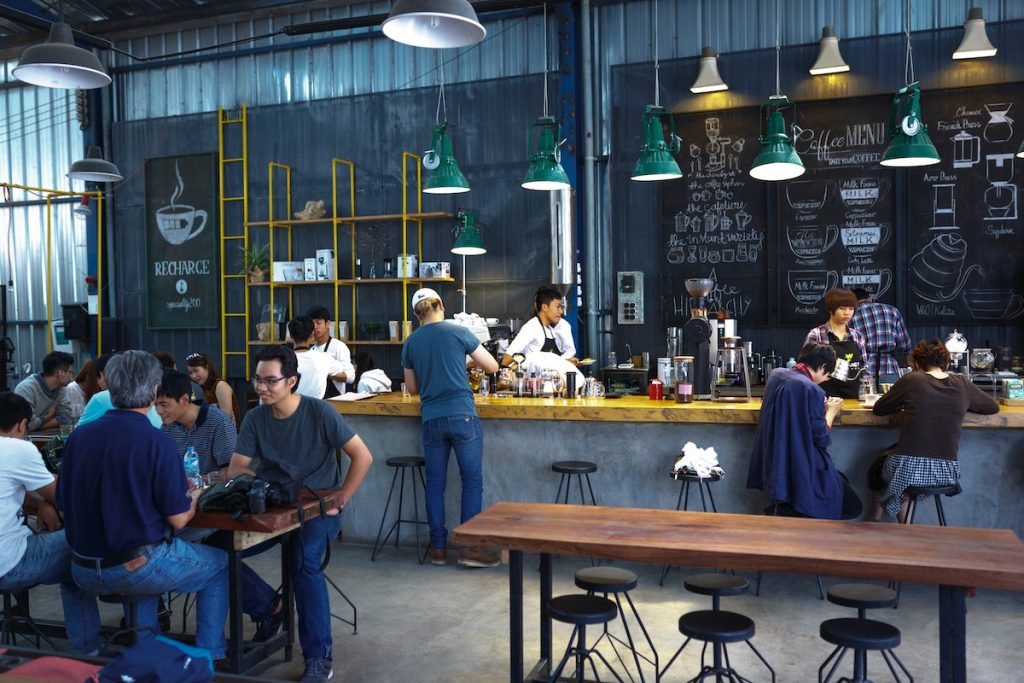Around 400 million cups of coffee are gulped down by Americans every 24 hours. This beverage comprises over 1,000 compounds that can have a tangible effect on one’s body – the most commonly researched being caffeine and polyphenols.
Drinking coffee has countless benefits for your health, from preventing type 2 diabetes and controlling Parkinson’s disease symptoms to slowing down dementia progression and protecting the liver. Due to this, coffee is a widely consumed beverage cherished by millions of people around the world.
Coffee Machine

Many people start their day with freshly-brewed coffee. Due to this, the first appliance they use every day is a coffee machine. Whether you’re an avid home barista or a lover of the classic cup of coffee, there’s no denying that—to make your caffeine dreams come true—you’ll need to get acquainted with the coffeemaker. A diverse range of coffee machines utilizes gravity or pressure to push hot water over freshly ground beans and produce your desired beverage!
Types of Coffee Maker Machines
There are three main types of coffee maker machines that people commonly use: drip, pour-over, and espresso.
Drip Coffee Maker

Drip coffee makers are the most commonly used coffee machine. Don’t be fooled into believing that a drip coffee machine won’t affect your coffee beverage! Drip coffee machines utilize a system where water is heated in a tube and poured through the ground coffee beans, passing through the coffee filter for your hot morning brew.
Pour-Over Coffee Maker
With the pour-over method, you control your coffee’s outcome! Using a conical filter and grounds, carefully poured hot water is slowly contained in a cup below. This type of coffeemaker uses filters, just like an automatic drip machine, but requires manual pouring of hot water over the ground beans. The user can control the flow rate and extraction time to create a unique cup of coffee.
Espresso Machine
An espresso machine can brew a robust cup of coffee by forcibly pressing near-boiling water through finely ground beans and a filter. This coffee maker is more complex than the other two and requires more skill. Many coffee businesses use espresso machines for their products. Getting this coffee machine will give an idea about the things to know about a coffee stand business.
How Coffee Maker Machine Works

You’ll likely have a drip coffee maker at home if you are among the millions of coffee aficionados worldwide. Since 2015, coffee consumption has been steadily increasing across the United States – with an overall 5 percent rise in use. Seven out of every ten Americans drink coffee at least once per week, and 62 percent indulge themselves daily. On average, American caffeine addicts guzzle just over three cups each day!
While several types of single-serve coffee makers exist, most coffee machines brew more than one cup at once! Now it’s time for you to enjoy an abundance of rich flavor without worrying about running out. How does your drip coffee maker work?
Components of Drip Coffee Makers
By disassembling a standard coffee maker, you would discover it has the same basic components as any other model. This includes two main segments: a top and a bottom section. The top section of the appliance contains the following:
- Water Reservoir – The reservoir is the main element of a coffee machine. It contains and dispenses the water you pour in. Its size differs between devices – some with greater capacity than others – but it remains a simple receptacle for holding liquid.
- Hot Water Tube – This insulated tube transports the heated water from your machine up to the faucet at its top. This hot-water tube is an essential link between the two locations for a successful liquid transfer.
- Faucet – A faucet is an essential tool, functioning as a mini showerhead to evenly saturate the coffee grounds through its hot water tube. This allows you to ensure that each cup of coffee offers complete quality and satisfaction.
- Drip Area – The drip area serves as a buffer, separating the spout from the coffee grounds. It consists of a thin plastic piece with precisely drilled holes that regulate how quickly water cascades to create your perfect cup.
On the other hand, the bottom section contains the following:
- Cold Water Tube – The cold water tube draws in the water from the reservoir and delivers it to the heating element. In other words, it takes your freshly poured cold liquid and redistributes it for steaming hot coffee!
- Hot Water Tube – Linked on one side to the heating element, and the other side to an outlet tube that carries hot water into the machine, this connector pipe facilitates a steaming flow of heated liquid, which is then dispersed over coffee grounds.
- Heating Element -Constructed from aluminum, the heating element consists of a resistive heater and a tube to transport the water. It does all the hard work when it comes to warming your water.
- One-Way Valve -To ensure an optimal brew, the one-way valve guarantees that your coffee machine’s water flows in the most effective direction through its reservoir or heating element tube.
- Power Cord Connection – The power cord connects the machine to the power source and ensures the coffee-making process is powered and ready to go!
Brewing Process of Coffee Maker Machine
Now, let’s take a look at how coffee makers work.
- To begin, fill your reservoir with crisp, filtered water and seal it shut to let the work commence.
- The reservoir’s bottom hole acts as a conduit, pushing water through the tube beneath and cooling it.
- The one-way valve into the aluminum heating tube brings the water through the heating element and then partially ascends the hot-water tube within your device. This guarantees your coffee will have just the right temperature.
- The heating element quickly heats up when you turn on the appliance. After a few minutes, the water secured in an aluminum tube is brought to a boil.
- Bubbles from the boiling water push the hot liquid through a tube connected to the coffee machine, finally delivering it to the faucet.
- The faucet is designed to spray hot water with the precision that it can even reach the coffee grounds.
- As hot water cascades through the ground coffee, it absorbs and carries its precious flavors into your waiting carafe or coffee pot.
From there, it’s time to sit back, relax, and enjoy your favorite cup of Joe!
Coffee makers come in many shapes and sizes. Each type of machine has its unique way of crafting the perfect cup and can be used to prepare different levels of intensity or flavor. Whether you are looking for an automatic drip maker or a manual pour-over brewer, there is sure to be a machine best suited to your preferences.



